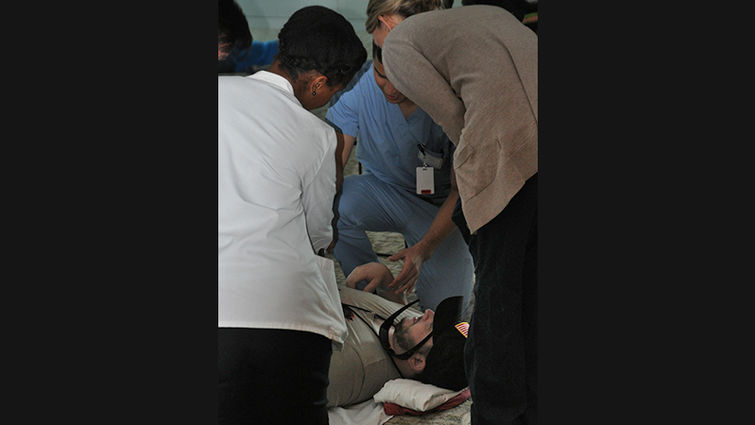
When tragedy struck in San Bernardino, CA, on December 2 of last year, Loma Linda University Medical Center medical staff had triage tents, crash carts, medical supplies and healthcare personnel ready to treat mass casualties. This response was put together in 18 minutes. This was not by chance. It was not by accident.
Students from Loma Linda University Schools of Medicine, Nursing, Allied Health, Behavioral Health, Pharmacy and Dentistry participated in an innovative, interprofessional educational experience, May 9-13.
The course “Multidisciplinary Response to a Critical Event/Disaster: An Innovative, Interprofessional Educational Experience,” has been developed to train health care professions students in the response to "critical events," that is, disasters such as the mass shooting that brought San Bernardino into the nation's spotlight last December.
Tae Eung Kim, MD, associate professor and associate medical director, department of emergency medicine for Loma Linda University School of Medicine, and director of the course, said, “The course is quite unique. We are the only university of health care professions in the nation to hold a course like this, particularly one that is interdisciplinary in nature involving students from the different schools, with medical students learning with nursing students, as well as with students from pharmacy, dentistry, behavioral health and the allied health professions.”
During this event, students learn skills to be effective responders in mass casualty and disaster events as part of their educational curricula.
Through six different critical event/disaster simulations, students learn to recognize potential critical events/disasters and are able to implement initial appropriate actions.
The principles of critical event/disaster management, and the complex communication needs for a critical event/disaster are demonstrated through appropriate and effective critical event/disaster communication skills within each team. Appropriate communication steps are identified; information to be reported, correct reporting authority, and alternative modalities are practiced.
Also during this training course, critical event/disaster safety principles instruction is provided to help students understand the incident command system, and the purpose of an institutional disaster operations plan and their potential roles in them as caregivers/responders. Students are taught to use the knowledge of one’s own role and of other professions’ roles to appropriately respond to the critical event/disaster scenario all, in a climate of mutual respect and shared values.
“The University has been conducting this course for the past 12 years, well ahead of last December's shootings,” stated Kim.
